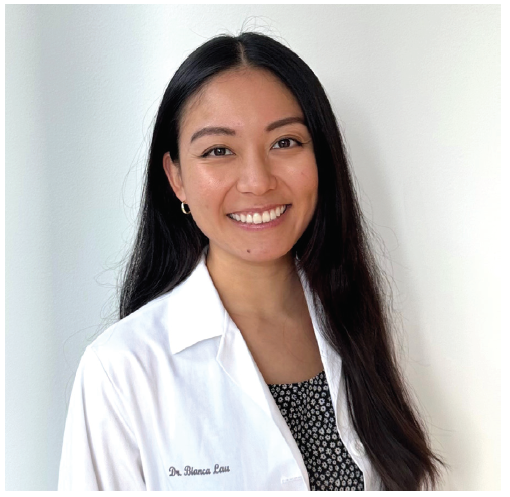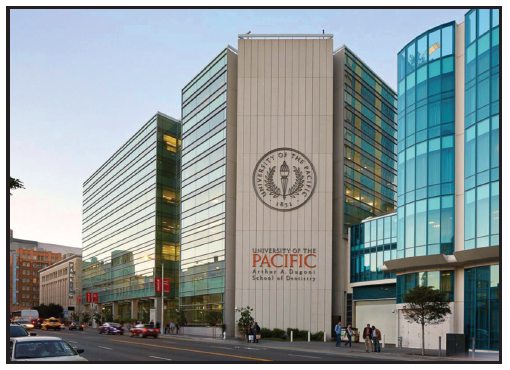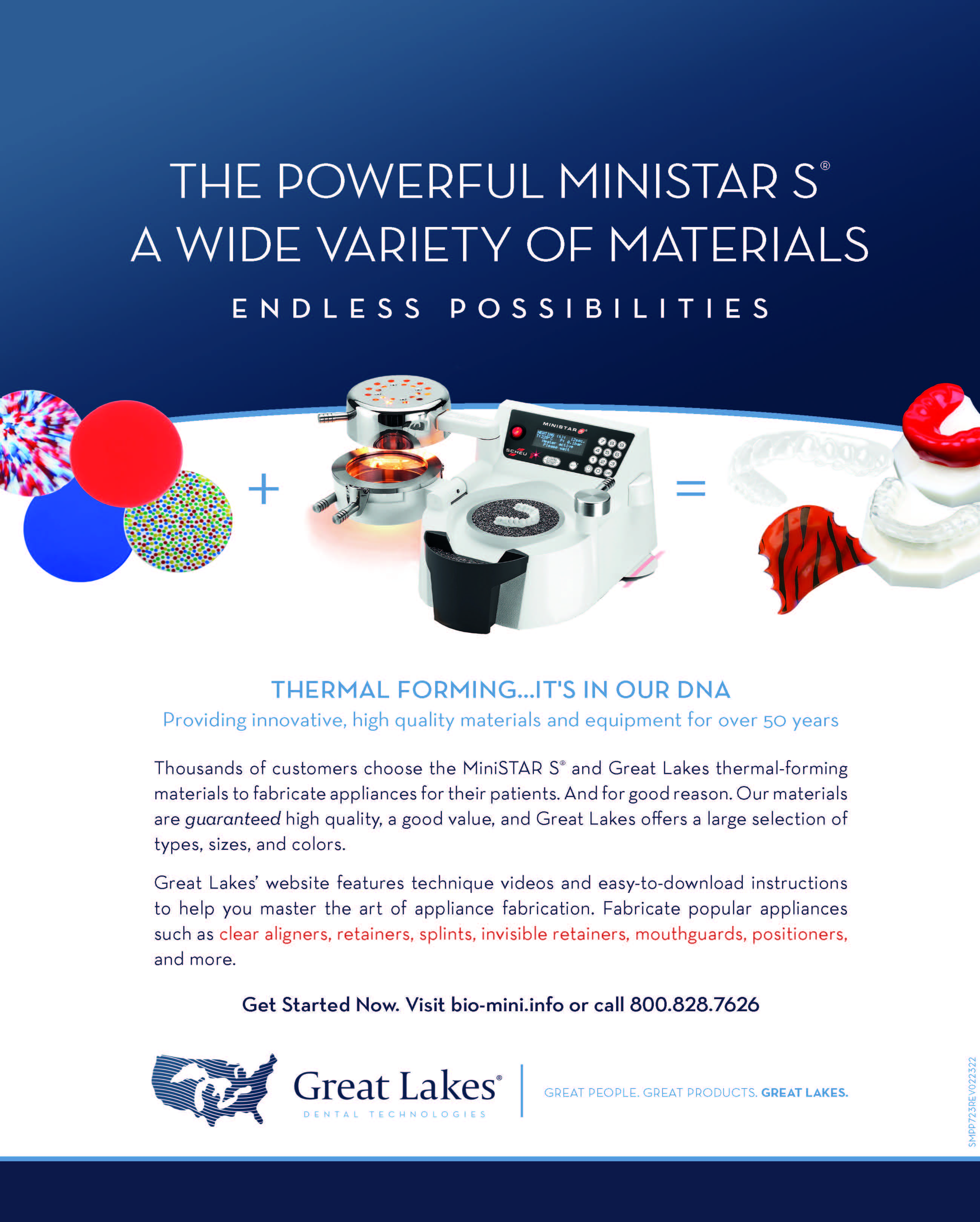2023 Eugene L. Gottlieb JCO Student of the Year: Dr. Bianca Lau
The Journal of Clinical Orthodontics is pleased to name Dr. Bianca Lau from the University of the Pacific (UOP) as the winner of the 2023 Eugene L. Gottlieb JCO Student of the Year Award, presented by American Orthodontics. Dr. Lau was selected over 30 other students from schools around the United States and Canada in a two-stage, months-long competition judged by members of the JCO editorial board. Her prize includes more than $8,000 worth of materials and travel from American Orthodontics, JCO, and Dolphin.
Dr. Lau is the eighth Student of the Year award winner, joining Dr. Shelby Steffenhagen of the University of Texas Health San Antonio (2022), Dr. Amanda Gross of Texas A&M University (2021), Dr. Saro Atam of Stony Brook University (2020), Dr. Katya Skillestad of Texas A&M University (2019), Dr. Samaneh Mojarrad of the University of Pennsylvania (2018), Dr. Moataz Elmahdy of the University of Rochester (2017), and Dr. Krystian Jarosz of Rutgers University (2016). Seven different schools have thus been recognized to date.
Any U.S. or Canadian orthodontic department was eligible to nominate one current student by submitting two letters of recommendation and the student’s personal essay. Each student was then given the materials from an unpublished case and asked to write a complete treatment plan, including all possible alternatives, within two weeks. Three JCO editorial board members narrowed the initial group of 31 nominees down to 12 finalists in December. In the second stage, each of the finalists submitted an ABO-style case report. The judging panel included Dr. John Graham of Salt Lake City; Dr. Neal Kravitz of South Riding, Virginia; Dr. Michael Meru of Thousand Oaks, California; Dr. Sarah Shoaf of Winston-Salem, North Carolina; Dr. Peter Sinclair of Los Angeles; and Dr. Kelton Stewart of Indianapolis.
As in past years, the judges were highly impressed by the quality of submissions. JCO will publish Dr. Lau’s case report as an online-only article in an upcoming issue. All 12 finalists will be featured on our Facebook page in the coming months.
Congratulations to Dr. Lau and the University of the Pacific! Current orthodontic students and faculty can expect the start of the 2024 nomination process in August.
PHILIP B. VOGELS
VP of Marketing and Business Development
Q&A with Dr. Bianca Lau
Can you tell us a little about yourself?
Growing up as an only child in an immigrant family, I was raised in a traditional Chinese household but also experienced a lot of cultural diversity outside my home. Because neither of my parents went to school in the United States, I relied heavily on my friends when it came to navigating the American school system. Even though my family was unfamiliar with this system, they did all they could to give me a balanced academic and social life. I attended tutoring classes and Chinese school on the weekends, but I was also involved in many fun extracurriculars such as drawing classes, volleyball, and swimming. Visual arts has always been a huge passion of mine, and I attended a technical arts high school where I was exposed to many different art media, including jewelry making, woodworking, photography, and glasswork. Working on detailed art projects that required a lot of hand skills eventually led to my pursuing a career in dentistry. Nowadays, when I’m not in the office doing orthodontics, I spend my time at the gym, the ceramics studio, or traveling! I have been to more than 20 countries and document my trips with self-made travel videos.
Why are you pursuing a career in orthodontics?
My favorite thing about orthodontics is that my patients can see the work I produce and there are many ways to get to that final result. There are always multiple treatment plans for every patient, and I enjoy giving them the option to choose what they want. I also like how dynamic orthodontics is, since the teeth look different every time the patient comes in. The most satisfying part is always the debonding appointment, where patients see the final result!
Can you describe the path that led you to the University of the Pacific?
Starting at a young age, I dreamed of becoming a dentist. As a result, I pursued UOP’s accelerated predental program, which consisted of two years of undergraduate studies followed by three years of dental school if accepted to UOP’s Arthur A. Dugoni School of Dentistry. During my time as a dental student participating in orthodontic research, I gained exposure to the orthodontic department. Having been in California my entire life, I applied to many programs across the country, but in the end, I was really impressed by UOP’s program. When I found out that I matched back at UOP, I was excited to continue being a part of the Dugoni family.
What has surprised you the most during your orthodontic education?
I did not realize that orthodontics can address many different aspects of a person’s oral health, overall health, and facial appearance. It was surprising to learn how orthodontics can potentially improve a patient’s airway and sleep. Residency also taught me to view dental treatment plans with a new perspective. In dental school, if I had a patient who was missing a tooth, I would consider a bridge or implant as possible plans. After being trained as an orthodontist, I can also explore options such as closing the space and how that can affect the patient’s overall function, occlusion, and profile.
What has been the most difficult part of becoming an orthodontist?

Dr. Bianca Lau

Arthur A. Dugoni School of Dentistry (photo courtesy of University of the Pacific).
Becoming an orthodontist is a long and rigorous journey, which makes it easy to become burnt out. Going through the accelerated dental program meant that summer breaks were replaced with more classes. As clichéd as it sounds, my life’s motto has always been “work hard, play hard.” With the short breaks that I did have, I maximized my free time by traveling and doing things I enjoyed. I tried my best to take care of my body by making time to exercise. I was also blessed with friends and family who always supported me and kept me sane. Now, looking back, I truly feel that I was able to achieve so much through the support of those around me.
What, so far, has been your most rewarding orthodontic experience?
One of my most rewarding orthodontic experiences revolved around treating a curious 8-year-old boy with a unilateral cleft lip and palate. He always ran toward me with a huge smile and asked me many questions. A few months into treatment, his mom pulled me aside to ask when his expander would be removed. She explained that he missed school often due to all his medical and dental appointments, and that the kids at school made fun of him for talking strangely because of his appliance. My heart sank when I heard that one of my sweetest patients was struggling at school. After we finished the expansion, he received a successful secondary alveolar bone graft. Having the cleft site repaired and all orthodontic appliances removed allowed him to excel in speech therapy and school. I felt that I was able to make a positive impact in his life in terms of his oral health and social well-being.
What has been your most difficult residential case?
I had a 14-year-old male patient with a narrow maxilla and bilateral impacted mandibular second molars. My treatment plan included maxillary expansion, extraction of the mandibular third molars, and exposure of the mandibular second molars. The mandibular second molars were so impacted that my attending faculty member and I had to brainstorm creative methods to upright the molars. Even after the exposure, none of the tooth structure of either molar was visible intraorally. Due to the minimal occlusal space, we had trouble getting enough activation from the cantilever arms we bent for extrusion. We ended up using occlusal bite turbos in addition to a nickel titanium coil spring that was wrapped around a cantilever arm to help extrude the molars. At one point, the gold chain debonded from one of the second molars. To expedite the process, I performed a laser gingivectomy to expose the tooth and bond a bracket onto it. One of the second molars was successfully brought in, while the other needed more work. The troublesome second molar was lying lingually, which meant that I had to move it buccally and also upright it. This required me to bond a bracket on the impacted tooth and to reposition the bracket whenever more tooth structure was visible. Each appointment was tedious, since I had to remove the bracket, clean the tooth, and isolate it for a new bracket. In addition, I had to think on the spot to determine the best bracket position to pull the tooth in its correct direction. After a year of treatment, I was able to upright both mandibular second molars!
Any research projects you’d like to tell our readers about?
My master’s thesis was to determine whether there are soft-tissue and skeletal cephalometric variables that can predict the need for future orthognathic surgery in cleft lip or palate patients in the mixed dentition. My curiosity about this topic stemmed from treating many craniofacial patients who had been in treatment for many years. I wanted to reduce the burden of care on these patients and their families, so I was hoping to derive an equation that would help predict these patients’ needs for orthognathic surgery. I looked at the cephalometric variables of 31 nonsyndromic patients at two time points: mixed dentition and full permanent dentition. All patients were categorized into the “surgery recommended” or “no surgery recommended” groups according to the recommendation of a panel of orthodontists and oral surgeons, as well as actual treatment rendered. The backward stepwise regression revealed that upper lip to E-plane, lower lip to E-plane, Wits appraisal, and U1-SN were the variables with the highest predictive value, and I was able to derive a predictive equation. Clinically, this would help facilitate a more efficient treatment plan that would reduce treatment time. In the future, in patients who will need surgery, orthodontists can first address the most pressing issues, such as expansion and secondary alveolar bone grafting, and then wait until the patient is in the late teens to start the second phase of comprehensive orthodontic treatment.
What are your postgraduate plans?
I am currently working at two separate UOP faculty members’ private practices, in Daly City and Mountain View, California.
What do you think orthodontics will look like in 10 years?
In 10 years, I believe most offices will be doing more aligner therapy. With more general dentists treating simpler cases, I also think orthodontists will be treating more complex cases that involve multidisciplinary teams.
Rapid-Fire Round
How can orthodontists thrive in today’s competitive marketplace, particularly with the increase in dentists offering various forms of orthodontics?
It is important for orthodontists to maintain good relationships with dentists in their community, so that general dentists know when they should refer cases to specialists. It is equally important to educate patients on when they should seek orthodontic specialists.
Social media: Should it be a major tool in an orthodontist’s marketing arsenal?
Social media is a powerful and effective marketing tool, but I think word of mouth and referral from general dentists are the best forms of marketing. Personally, I would trust what my dentist or friend recommended over a social-media post.
Clear aligners: What malocclusions should they be considered or not considered for?
With the improvements in clear aligner research and clinical applications, I think clear aligners can treat most cases, but are especially helpful for open-bite and periodontally compromised cases. I think the biggest limiting factor is patient compliance.
TADs: Are we moving toward too much TAD usage, or will applications continue to increase?
Since there is always a possibility that the TADs can fail, they should be used when all other traditional biomechanics have been exhausted. I do think, however, that TADs enable us to treat more complicated cases and develop more treatment options for patients.
Extraction: Where do you stand on the debate?
I think extractions are warranted when there is severe crowding, excessive proclination of incisors, and an unbalanced profile, such as lip incompetence. I don’t think extractions affect the airway negatively when prescribed for correctly diagnosed cases.
Retention: Should patients always be pushed toward permanent retention, and how long should we continue to see them on recall visits?
The type of retention recommended should be tailored to what the patient would be willing to wear or maintain. With that said, I do think that lower fixed retainers are the best form of long-term retention. Orthodontists should see patients for retention more frequently within the first year after debonding, and we should welcome patients to schedule recall visits on an annual basis afterward.
Phase I treatment: Overused, underused, or properly used?
Phase I treatment can easily be overused, since early treatment has become more popular. I would recommend Phase I treatment only in those patients with large skeletal discrepancies or lack of space for the permanent dentition.
3D printing: Are we going to reach a point where orthodontic practices must have this capability in-house?
I don’t believe that 3D printing will be mandatory in offices, but it is helpful in reducing the turnaround time for appliance delivery. As a result, this technology would be most useful in emergency situations, such as same-day delivery of retainers for patients leaving on vacation.



COMMENTS
.